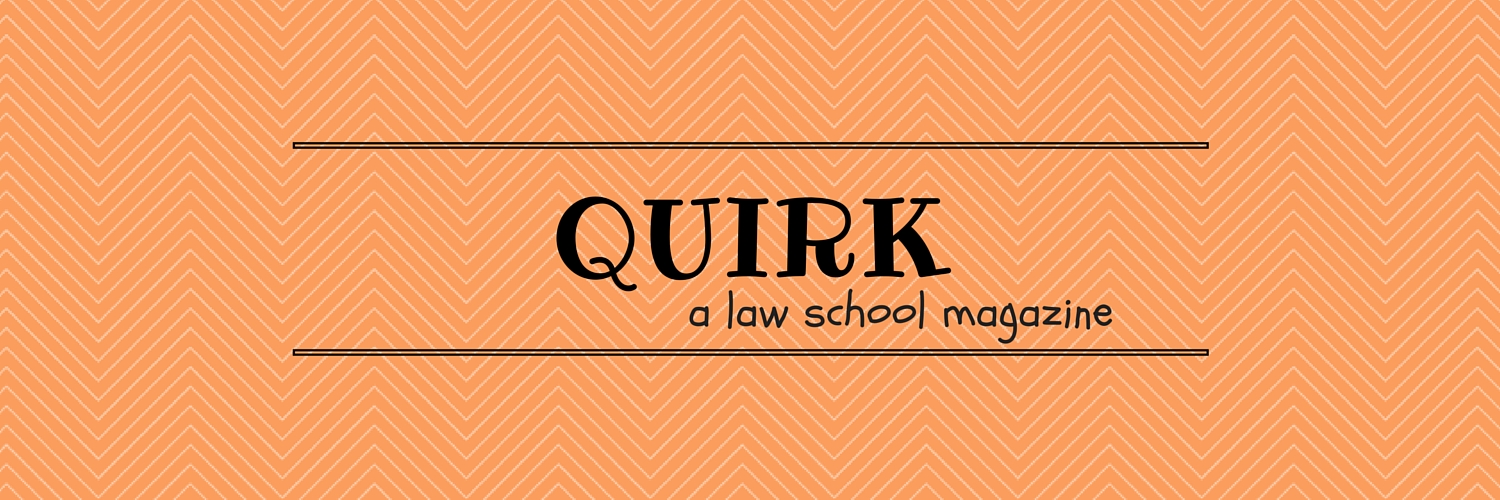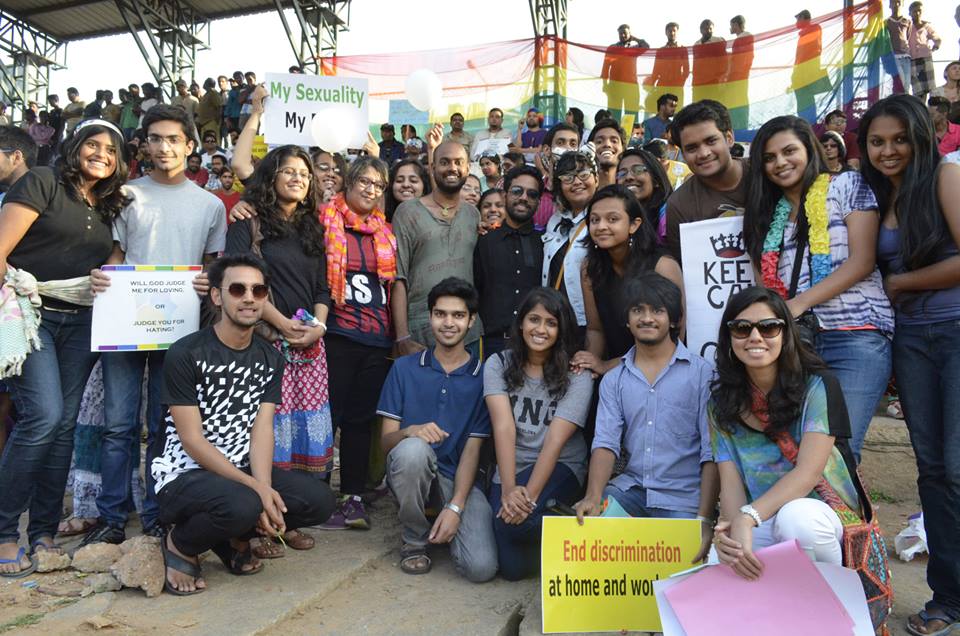Written by Sakhi Shah, a fourth year student at NLSIU. She can be contacted at [email protected].
National Law School often considers itself a bastion for LGBTQ (Hereinafter referred to as “Queer”) rights in India. It is unquestionable that we are a visible part of the queer movement, especially the queer legal movement, in India. Some of us would like to believe that we have always been open to a discourse on queer rights. Conversely, some of us would like to believe that NLS students today are more open to queer rights than we have ever been in the past. However, as most of us ideally learn in first year, history makes fools of all of us.
Pre-1997: Problematic Freedoms
The first few generations of law school students were, perhaps, dramatically open to challenging gender roles. It was possible for a male student to wear skirts to class and openly flaunt his nail polish collection at Univ Week. However, in many ways, earlier batches did not have the vocabulary to articulate queer rights. Prof. Sarasu recalls how her first ever motion in the university debate rounds was to argue for and against homosexuality – a motion that most of us would find difficult to be opposition for in law school today. At the same time, the idea of decriminalization was not even debated – whether in classrooms, or out of it. As one alumnus very succinctly puts it, “Sexuality wasn’t an issue that people took seriously.”
All of this changed in 1997.
1997: The First Ever Conference
Picture this: two students, sitting in the library together, working on a project on an issue that no one in law school considers particularly relevant. Then one of them suggests that there needs to conference about this. Despite initial fears of how they would be perceived as a result of the event (“I still have to live in the boys hostel, you know”) these two students – Arvind Narrain and Kabir Bavikatte – decide that it seems to be a good idea.
Implementing it, in an era when a simple Google search couldn’t put you in touch with a wealth of LGBTQ support groups, is a little bit harder.
They started by contacting Bombay Dost, who put them in touch with a lesbian activist group from Bombay, who finally put them in touch with Good As You and Sangama in Bangalore. “We had to go all the way to Bombay to find someone back home,” quips Arvind Narrain. Nonetheless, the idea struck a chord with many people. Good As You helped raise money, and influential people came from all over the country at their own expense, all of them believing that this group of young law students had the potential to do something momentous for the nascent queer movement. Shockingly, without any coercion, the event saw massive participation – across batches and from around the city. It was also widely covered by the press. Perhaps the only hurdle that the organizers faced was having an overlarge banner on Gate 1, which they were forced to remove by a scandalized faculty member.
Still, banner or no banner, a conversation had started.
The Alternative Law Conversation
Soon after the Conference, the Alternative Law Forum was set up by a set of prominent students and faculty. A resolutely pro-queer group, they greatly helped further the queer discourse on campus because they came and actively discussed on campus a subject that had never even been talked about in classrooms. “There were those two courses we conducted at that time,” says Arvind Narrain. “So many of the people who attended those courses went on to be activists at the national level.”
Suddenly, queer rights had become a topic of conversation in law school. It was no longer possible to make thoughtless or malicious comments about queer people, either within the classroom or outside it. When Justice Verma came to law school shortly after making derogatory remarks about the queer community, students attracted the wrath of the then Vice-Chancellor by having a black band protest against him. However, despite this, it was not easy to be openly queer in law school. Most students, if they came out at all, would only come out to close friends.
Naz Foundation Judgment
In 2009, the Delhi High Court gave its decision in the case of Naz Foundation v. Government of NCT, Delhi, a great triumph for the queer movement – outside law school and within it. “It is not so much that Naz or Koushal changed anyone’s opinions,” says Padmini Baruah. “It was more that they gave us an opportunity to discuss the queer movement and the challenges it faced in society. It did prod people to think – people who wouldn’t even have bothered.”
However, despite this growing discussion of the queer movement, academic engagement was very limited. It took almost 16 years for law school to having another conference about gender and sexuality.
2013: Conference on Gender and Sexuality
“Having this conference in law school after a huge gap since 1997 was important to me and to others directly affected for the communicative value it had. It was an act of speaking up and being heard,” says Sakshi Arvind, who was Convenor of the Law and Society Committee in the year this Conference was organized by them. In many ways, the Conference was a reflection of a more mature conversation around queer rights in India. Discussion touched upon both the growing legal issues as well as on complex topics such as intersectionality in the queer movement. Many of the speakers were from the Alternative Law Forum, and there was a general feeling of having turned a full circle. Arvind Narrain, a speaker in the 2013 Conference, notes that, “We were all awaiting the judgment in Suresh Kumar Koushal v. Naz Foundation, and the Conference reflected the optimism and trepidation regarding the judgment.”
Suresh Kumar Koushal v. Naz Foundation
When it came, the Supreme Court judgment shook the queer movement, and individuals within campus. “Koushal was one of the most defining moments in law school since it brought the queer agenda to the forefront once again and initiated a discussion on the same,” says Akshat Agarwal. “The support was in fact overwhelming in some sense. As a queer person it perhaps made me more aware of my surroundings and made be conscious of my own identity.”
Students and faculty actively participated in the protests that were held after the event. Members of the queer community screamed, shouted, burnt things, danced, cried, and mourned the promise of Naz. Discussions were taken to the classroom and on online forums, and the Student Bar Association actively condemned the judgment. Very soon, however, law school went back to talking about other things.
The Vandalism Incident
Like Koushal, another unfortunate incident that greatly contributed to the growth of the discourse around queer rights was the writing of a homophobic slur on the bulletin board of a faculty member. Faculty, individual students, and committees sent out strongly worded emails vehemently condemning the incident. Another group calling themselves #NLSSpeak occupied 19(1)(a), filling it with messages of solidarity for queer people around campus. The message was clear: homophobia would no longer be tolerated in NLS’ public spaces. On the other hand, the incidents themselves were troubling to many people, who consider them a reflection, within NLS, of the growing intolerance in society.
Pride
Another event that prompts law school to remember its queer community is on the day of Pride. While Pride has always seen some participation from the law school community, the last two years have seen a record participation in Bengaluru Pride from National Law School. Last year, especially, a large number of first years participated very enthusiastically. In many ways, Pride is a celebration that sensitizes individuals without the need of any words: it is difficult to hold onto your prejudices after dancing, shouting slogans and walking a few miles in the shoes of queer people – especially queer people from outside the privileged walls of NLS.
Within our Privileged Walls
Has the discourse on queer rights, however, actually made life better for queer people within NLS? Opinions are varied. “Personally, I do feel that NLS is a safe space for queer people,” says Akshat Agarwal. Indeed, many queer people do feel comfortable to come out openly on campus. Discussions about queer rights, and Section 377 have also, albeit slowly, entered classrooms and question papers. Sakshi Arvind, on the other hand, has this to say, “NLS was never actively hostile towards queer people. Certainly not. But then, that doesn’t help – there are different ways of making life difficult for people!” Queer people on campus do have to face massive discrimination – from jokes to concerned attempts to ‘change’ them to hatred behind closed doors.
However, the general consensus is that the attitudes within Law School are as diverse as India. It is also believed that the attitudes are a reflection of the varied socio-economic and cultural backgrounds from which students come. With the influx of students from different backgrounds, many of whom have not had the opportunity to ever discuss queer rights, and with a growing consciousness of a queer identity of sorts, conflicts have become a serious concern. Queer people and allies on campus have come together to provide each other support and to raise consciousness about gender and sexuality on campus, in an initiative called the NLS Queer Alliance. “The idea behind the initiative was to ensure that the incoming batches to law school had someone to go to in case they wanted to talk and to ease the process of coming-out,” says Akshat Agarwal, one of the co-founders of the NLS Queer Alliance.
The Way Forward
“NLS has a queer culture to a small degree. It needs to get wider recognition, and become a part of normal discourse, not just what the three of us are doing,” says Padmini Baruah, who is also part of the NLS Queer Alliance. Certainly, it is not possible for the student body to sit back and relax and consider its job done – inside and outside campus, there is an urgent need for queer rights to be debated, recognized, and protected.
“The discourse has to continue,” says Professor Sarasu Thomas. “We have to educate people if we want to make NLS a truly safe space.”
—
I’d like to thank Arvind Narrain (‘98), Vikram Raghavan (‘97), Professor V.S. Elizabeth, Professor Sarasu Esther Thomas (‘95), Sahana Manjesh (‘13), Sakshi Arvind (‘14), Padmini Baruah (V), Vani Sharma (II) and Akshat Agarwal (IV) for agreeing to be interviewed for this article.
Please note that this article is the first in a series of articles, and if you’d like to share your perspective about the queer movement in NLS, I’d love to hear it.


Comments